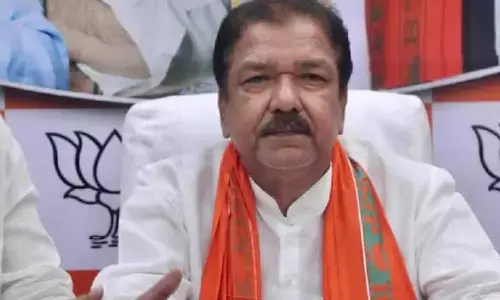India on the threshold of investment recovery

As the new government under the NDA headed by Prime Minister. Narendra Modi has crossed the first six months in the saddle of governance, the prospects for Indian economy in terms of revival of activities in the real sectors such as agriculture, manufacturing and services have distinctly and vastly improved.
As the new government under the NDA headed by Prime Minister. Narendra Modi has crossed the first six months in the saddle of governance, the prospects for Indian economy in terms of revival of activities in the real sectors such as agriculture, manufacturing and services have distinctly and vastly improved.
Right from the maiden budget of the NDA after a decade of its return to the centre-stage presented by Union Finance Minister Arun Jaitley in July 2014 till now, the government undertook measured and cautious steps on the economic front lest too much rush in a gush by way of policy tweaking should be suicidal and self-defeating.
Still, it can be said to the credit of the new government that it did not do different things simultaneously but did things differently and in an incremental fashion. The very first sign of change of guard that generated positive energy in the economy was the announcement to dismantle various cabinet committees and empowered group of ministers under which important decisions got deferred.
A deadline of just a fortnight was set for policy discussions impinging on inter-ministerial issues. On the primary sector of agriculture, the government took bold decisions of announcing only modest increases in the minimum support price (MSP) offered to the farmers so that the unsustainable food subsidy bill could be managed and the resultant gains in terms of public outlays could be used for investment on public work programmes. Alongside, the authorities took steps to reduce public stocks of foodgrains by offloading them in the open market thereby reducing the cost of holding such stocks.
Farmers and growers were also freed from the onus of selling their produce, mostly fruits and vegetables, common mass consumption items, in their local agricultural produce marketing committees so that they could realise remunerative price for their toil, sweat and labour in the larger open markets.
On the manufacturing front, the government launched a “Make in India” programme so that the Indian products would get a leg-up in terms of being competitive both in price and quality not only within the country but also abroad. In order to enable domestic manufacturing to gain cost advantage in local production, the authorities took several steps to improve the ‘doing business’ ethos within the country through administrative actions so that the pronounced pro-growth and pro-business approach is understood and used up by entrepreneurial forces.
The government also opened up important sectors like defence and railways for overseas investment and increasing the FDI cap in the insurance segment and the foreign direct investment into these fields would definitely go a long way in improving these sectors. Following a Supreme Court ruling invalidating the allocation of over 200 coal blocs since 1993 that left dozens of private companies in uncertainty over their power supplies, the government came out with an Ordinance to sort out the mess on October 20. The government can now reassign these blocs through a transparent, online auction.
It is against this backdrop that the Moody’s, a global rating agency, has recently changed the outlook for Indian non-financial corporate to stable from negative. Besides, FDI inflows into India have increased significantly since April 2014 and this trend of rising FDI is set to persist over the coming quarters on the back of the country’s pro-growth policy agenda and favorable economic milieu when compared to other major emerging markets.
Former RBI Deputy Governor Rakesh Mohan in a recent paper co-written with Anu Madgavkar, a senior fellow at the McKinsey Global Institute, has contended that India’s economic data are “promising”. Annual average GDP growth is forecast to range from 6.4 per cent to 7.7 per cent until 2025. They said this compares favorably with last year’s 4.7 per cent rate and is close to the 7.7 per cent average logged in the last decade up to 2012. They have withal pointed out that this acceleration would place India among the world’s fastest-growing large economies and increase the number of Indian consumers who can afford discretionary items from 27 million in 2012 to 89 millions in 2025.
More prominently, Japanese financial services major, Nomura said its composite leading index for India suggests that the economy has already hit its trough and is in the early stages of a business cycle recovery.

















